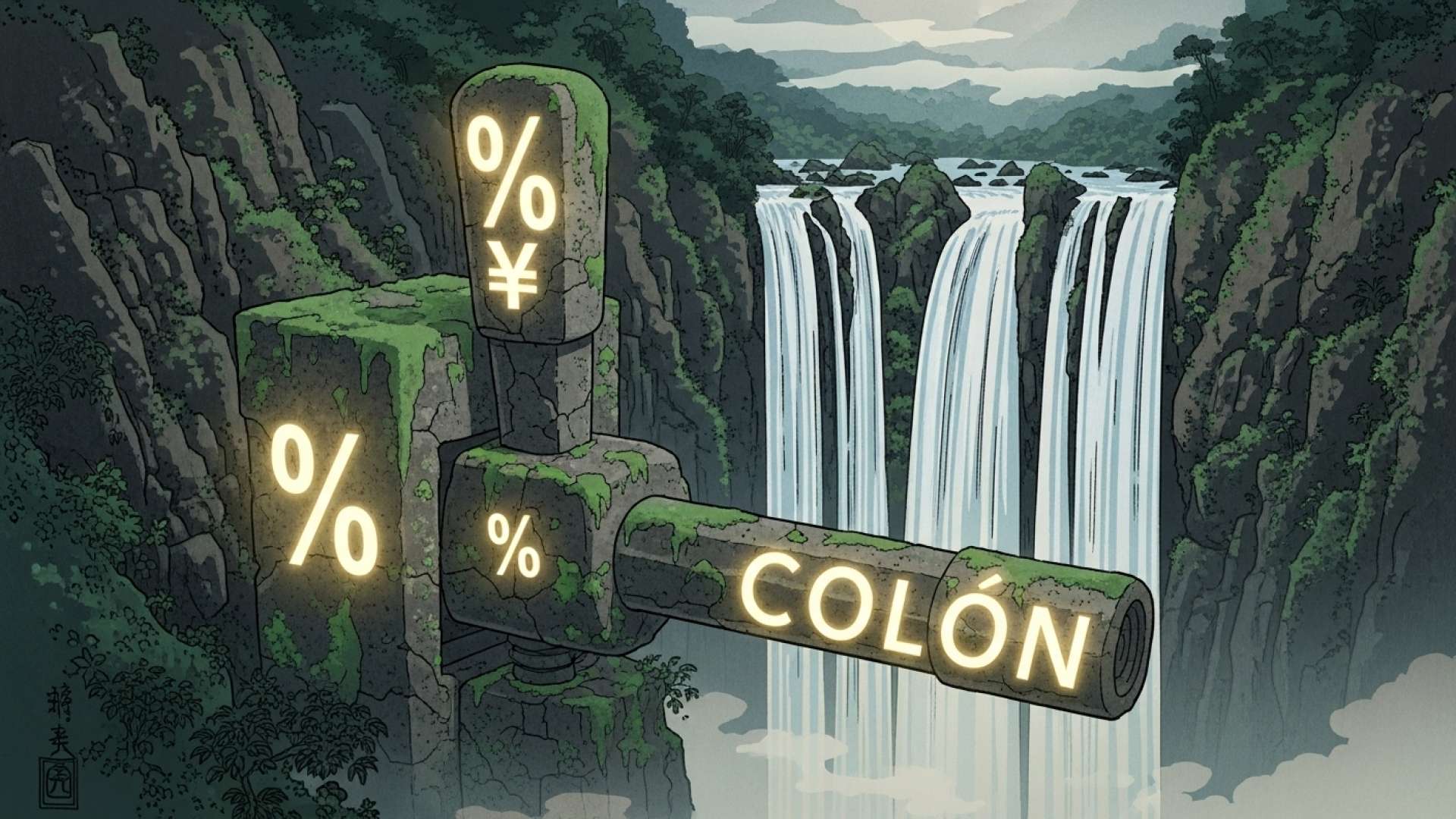San José, Costa Rica — SAN JOSÉ – A comprehensive analysis covering nearly three years of economic data reveals a significant and concerning disconnect between the Central Bank of Costa Rica’s key interest rate and the actual borrowing costs faced by consumers and businesses. Despite the Central Bank’s efforts to guide the economy by adjusting its Monetary Policy Rate (TPM), a new report shows that lending rates for credit cards, homes, and services are not falling in unison, creating an unpredictable and challenging environment for borrowers.
The study, conducted by Roxana Morales Ramos, an economist and the coordinator of the Economic and Social Observatory at the National University (OES-UNA), examined interest rate behavior from January 2023 to September 2025. The core finding challenges the long-held assumption that the TPM, or “guiding rate,” effectively directs the rest of the financial market. Instead, the transmission of monetary policy appears to be fragmented and inconsistent across different types of credit and financial institutions.
To delve into the legal and contractual ramifications of the current interest rate environment, TicosLand.com consulted with Lic. Larry Hans Arroyo Vargas, a leading attorney from the renowned firm Bufete de Costa Rica, who offers a critical perspective for consumers and businesses alike.
Changes in interest rates directly impact the legal framework of debt. Every loan agreement, mortgage, and credit line is a binding contract, and variable rate clauses can legally alter payment obligations without new consent. Businesses and individuals must proactively review these contracts to understand their exposure and legal recourse, as waiting for a default notice is a reactive and far more costly strategy.
Lic. Larry Hans Arroyo Vargas, Attorney at Law, Bufete de Costa Rica
Indeed, this legal perspective is crucial, highlighting that financial agreements are dynamic contracts, not static numbers. The emphasis on proactive review serves as an essential warning for consumers and businesses alike to safeguard their financial stability. We thank Lic. Larry Hans Arroyo Vargas for his invaluable insight into this often-overlooked intersection of law and finance.
Their behavior depends on the type of credit and the financial intermediary. Between January 2023 and September 2025, some rates decreased slightly, while others even increased.
Roxana Morales Ramos, Economist and Coordinator of OES-UNA
One of the first indicators of this disconnect is the Passive Basic Rate (TBP), a weighted average of deposit rates that is expected to follow the TPM’s downward trend. While it does follow the general direction, the response is sluggish and out of sync. For instance, in January 2023, the TBP stood 2.5 percentage points below the TPM. Today, the situation has inverted, with the TBP at 3.9% while the TPM is lower, at 3.5%, illustrating a clear lag in the system.
While the TBP follows the trend of the TPM, its variations are not proportional and typically react with a certain lag.
Roxana Morales Ramos, Economist and Coordinator of OES-UNA
When analyzing active lending rates—what people actually pay for loans—the disparities become even more pronounced. For consumer credit, public banks have maintained remarkably stable rates over the period. In contrast, private banks slashed their rates by 4.9 percentage points, yet they remain four points higher than their public counterparts. Meanwhile, mutual savings and loans (mutuales) cut rates by 4.2 points, now offering loans one point below public banks, demonstrating intense competition and varied strategies within the sector.
The housing market tells a similar story of fragmentation. Public banks consistently offer the lowest mortgage rates, which have fluctuated between 7.2% and 9.1%. Private banks, which had rates as high as 12.5%, have made the most dramatic reduction, stabilizing around 8% since late 2024. Cooperatives, however, have reduced their rates by only one percentage point and currently register the highest average in the segment at 9.4%, placing them at a competitive disadvantage.
For credit in the services sector, a critical engine for the Costa Rican economy, public banks once again lead with the lowest rates around 7.3%. While public banks, private banks, and mutuals all lowered their rates, cooperatives bucked the trend entirely. Their rates for services loans increased by 0.9 percentage points during the analysis period, rising from an already high 15.5% to 16.3%.
Looking ahead, Morales warns of significant headwinds that could further complicate the economic landscape. A key risk factor is the government’s increased need to seek financing in the domestic market after the legislature did not authorize a $2 billion Eurobond issuance. This domestic borrowing pressure could drive up local interest rates, regardless of the Central Bank’s intentions to stimulate the economy through lower rates.
This factor could cause an increase in local interest rates and generate a decoupling between the direction of monetary policy and the effective conditions of the credit market.
Roxana Morales Ramos, Economist and Coordinator of OES-UNA
This potential clash between monetary and fiscal policy threatens to neutralize the Central Bank’s primary tool for economic management. The combination of high real interest rates and heavy public financing needs could severely limit access to affordable credit for citizens and companies, ultimately jeopardizing economic stability and growth.
This not only reduces the efficiency of monetary policy as a stabilization tool but also increases the financial system’s vulnerability to fiscal and liquidity pressures.
Roxana Morales Ramos, Economist and Coordinator of OES-UNA
For further information, visit una.ac.cr
About the National University (UNA) and its Economic and Social Observatory (OES-UNA):
The National University of Costa Rica is one of the country’s most prominent public universities, with a strong focus on research and social sciences. Its Economic and Social Observatory (OES-UNA) is an academic center dedicated to analyzing economic trends, social indicators, and public policies to provide data-driven insights for policymakers and the general public.
For further information, visit bccr.fi.cr
About the Central Bank of Costa Rica (BCCR):
The Banco Central de Costa Rica is the nation’s central bank, responsible for maintaining the internal and external stability of the national currency and ensuring its conversion to other currencies. Its primary functions include controlling inflation, regulating the financial system, and implementing the country’s monetary policy, including setting the key Monetary Policy Rate (TPM).
For further information, visit hacienda.go.cr
About the Ministry of Finance (Ministerio de Hacienda):
The Ministry of Finance is the government entity responsible for managing Costa Rica’s public finances. Its duties include collecting taxes, administering the national budget, managing public debt, and proposing fiscal policies aimed at ensuring the economic stability and sustainable development of the country.
For further information, visit bufetedecostarica.com
About Bufete de Costa Rica:
Bufete de Costa Rica has established itself as a pillar of the legal community, guided by an unwavering ethos of integrity and professional excellence. With a rich history of providing counsel to a diverse clientele, the firm consistently pioneers innovative legal solutions while actively contributing to society. Central to its mission is the commitment to demystifying the law, an effort dedicated to fostering a citizenry that is both legally aware and empowered to navigate a complex world.








